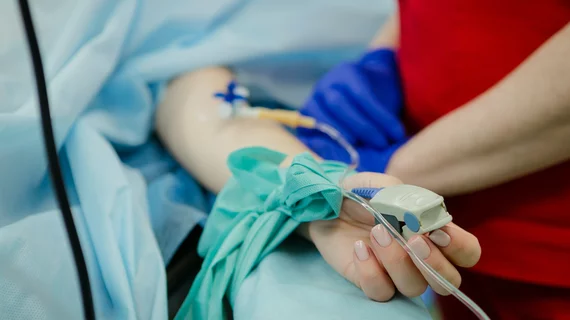3 new POCUS products demoed for emergency docs
Butterfly Network, Mindray and Philips introduced new point-of-care ultrasound offerings at ACEP 2022, the annual scientific assembly of the American College of Emergency Physicians, which wraps in San Francisco today.
Announcing the FDA has greenlighted its Ultrasound 5000 Compact Series, Philips says the product line integrates with the OEM’s tele-ultrasound technology for remote consultations and operates much like other Philips ultrasound lines to facilitate fast adoption by existing Philips clients.
“Globally, clinicians are faced with increasing pressures to deliver higher patient throughput for quick, confident diagnoses via ultrasound exams, while receiving more and more requests to perform rapid ultrasound exams at the bedside,” says POCUS general manager Matthijs Groot Wassink in a news release. “Until now, portable ultrasound systems have typically meant decreased performance, lack of advanced features, and lower grade image quality.”
Mindray debuted its TE X system, saying ahead of the conference that the POCUS entry uses proprietary beamformer technology called Zone Sonography and a wireless transducer that connects to the TE X or can be used independently with a mobile device.
Jim Berry, Mindray’s senior marketing manager of POCUS, says the TE X demonstrates the company’s “dedication to the emergency medicine market and our continuous innovation to drive the market forward.”
Butterfly Network presented learning software that works with its enterprise imaging platform, Butterfly Blueprint, to build POCUS proficiency while supporting staff credentialing and enterprise scaling.
The company says its proficiency management program for POCUS notifies learners how they’re progressing toward proficiency, offers clinical tips and appraises the effect of bedside imaging on overall patient care.
Butterfly’s press materials quote emergency medicine specialist Ryan Gibbons, MD, of Temple Health in Philadelphia.
“Emergency Medicine has been at the forefront of developing point-of-care ultrasound and pushing the boundaries of its use. This experience provides us with a unique understanding of how to implement ultrasound as core to the way we work,” Gibbons says, adding that ultrasound leaders “require a system that tracks the number and type of scans while offering the ability for quality assurance and feedback. The Butterfly Proficiency Management System addresses much of this.”
For its own part, ACEP announced the election of its next president and four board members.

